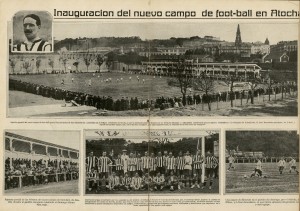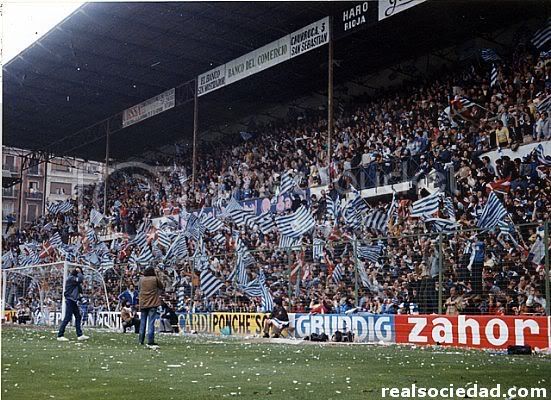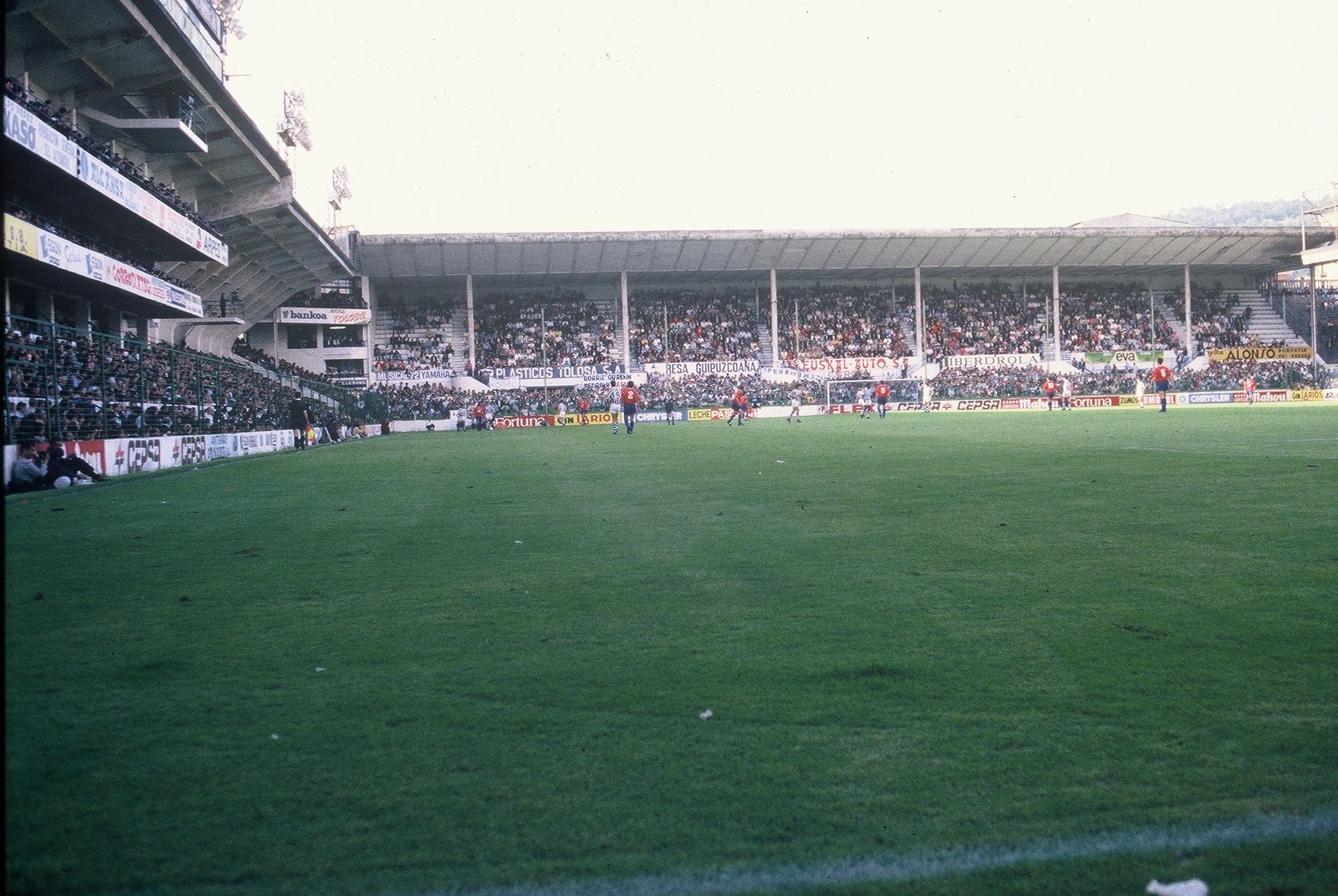Last update 2 October, 2021 by Alberto Llopis
Atocha Stadium was the sanctuary of the Royal Society and one of the most classic stadiums in the Spanish League for many seasons. We remember one of those mythical Spanish stadiums already disappeared, that no longer exist today. Maybe it was not the prettiest, even the most elitist but it was one of the most historic stadiums in Spanish football. An old enclosure of that San Sebastián of the 20th century, with those rainy afternoons, barro, smell of cigar and fight on the lawn. Welcome to Atocha.
Atocha, the home of the Royal Society for 8 decades
Atocha was launched a 4 October 1913. The rival for such an event could be no other, the eternal rival, Athletic Bilbao. That afternoon of more than a century ago, They began eighty years of history, where many teams would suffer a great time on the lawn of the legendary stadium donostiarra.
With its ancient bleachers, their funds without seats, constantly filled to the brim, where players, They felt the breath of the fans on their necks. On the frequent rainy afternoons over San Sebastián, the lawn was filled with mud where the most painted of football stars, He had to roll up and fight to win a match. Those times were the true essence of this sport, It was pure football, It was real football.

The distance from the stands to the field line, It was so minimal, who came to intimidate rivals. From Of Stefano, Puskas o Giving birth until Laudrup, Koeman, Hugo Sanchez y Butragueño, going by Cruyff y Neeskens, many were the stars of the time they played at the legendary stadium in San Sebastian with very mixed fortunes. Atocha, He had four tiers with some old grandstands, where the funds lacked seats were filled with fans, they were almost past the keeper.
The place where the Royal Society lived the best years of its history so far
The Royal Society lived in Atocha the best years in its history, where he won two league titles followed the 1980-81 and the 1981-82, Copa del Rey in 1987 and a Super Cup, in fact, since the change of stadium, has not risen again no title. The San Sebastian club has lived both sides of the coin in recent decades.
He came to have a capacity of 27.000 spectators, but ultimately, in the 80's, for security reasons, It was adapted its ability to 17.000, what made him a pressure cooker whenever playing the Real at home. For this same reason, it had to change stadium, since security measures were outdated and almost nonexistent. The cost of the works to adapt to new times Atocha was so high, which had to make the decision to build a new stadium.

The old stadium of Atocha began to be demolished on 22 June 1993. That day the history of this mythical stadium officially ended, 80 years of blood, sweat, tears and football days were buried in rubble to make way for a legend. Pure and simple history of Spanish football was replaced by a few floors of official protection, something unromantic, but life and changing times so.
From Atocha to Anoeta and from there, to the spectacular Reale Arena
He The last player to score an official goal in Atocha was the Portuguese Ocean. It happened in 1993 and it was the last time you celebrated a goal Atocha. Times change, and the 90's, They gave way to the modernist and beautiful Anoeta Stadium. Unlike the ancient Atocha, the new home of the Royal Society, it had some athletics tracks that separated the public from the players, perhaps a little cooling environment.
With the passing of the years and the passing of time, Anoeta underwent a spectacular reform that eliminated the slopes and ended up becoming the spectacular and modern Royal Arena (name for obvious patronage reasons) already in the years 20 XXI century.


